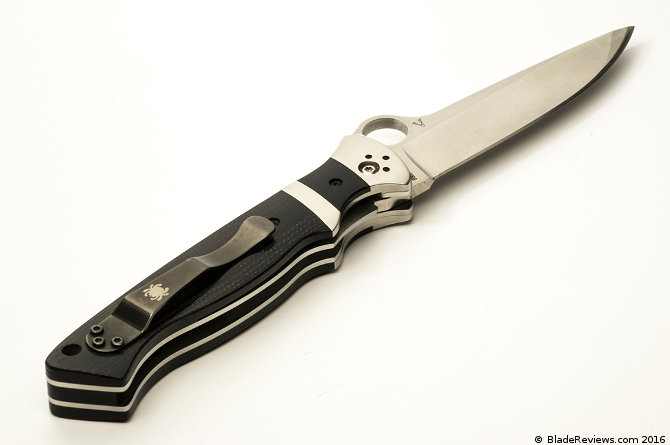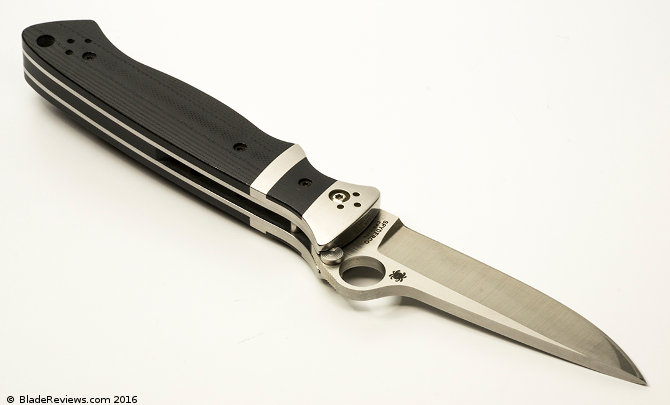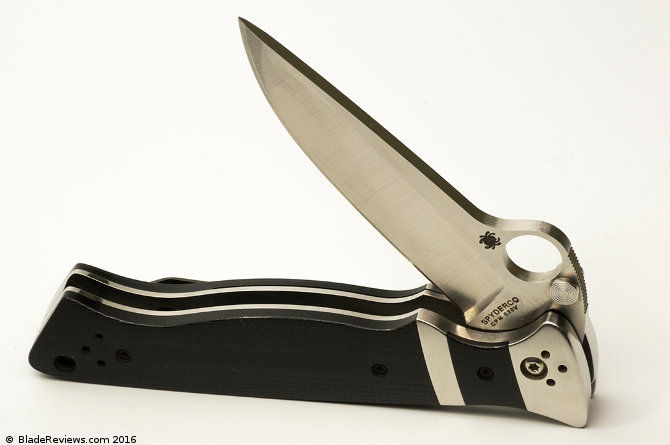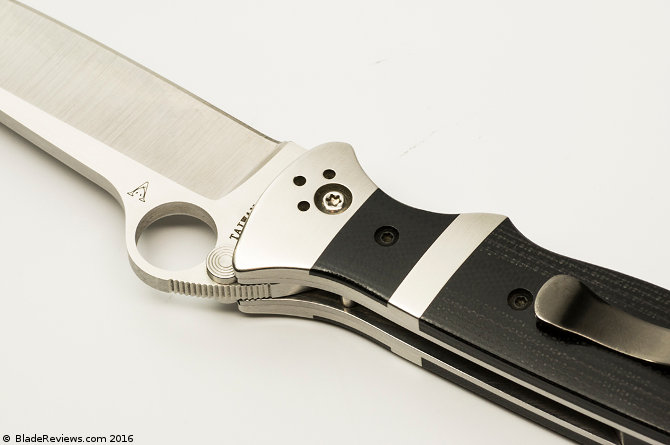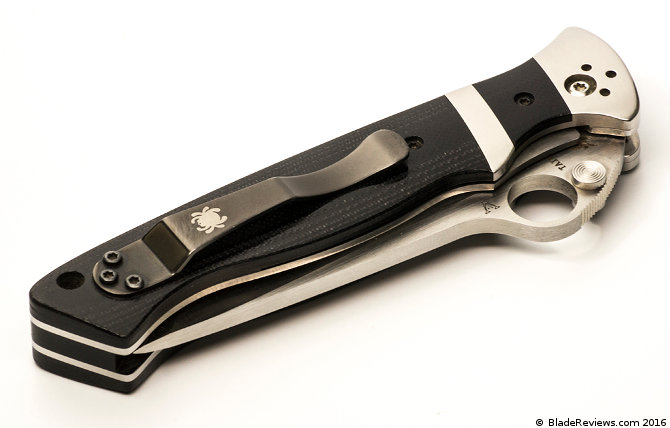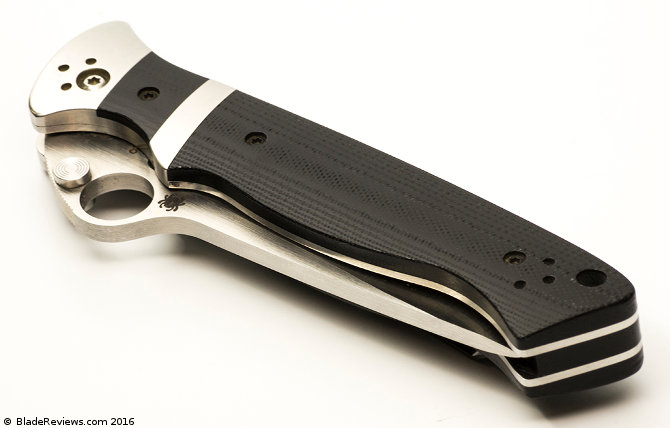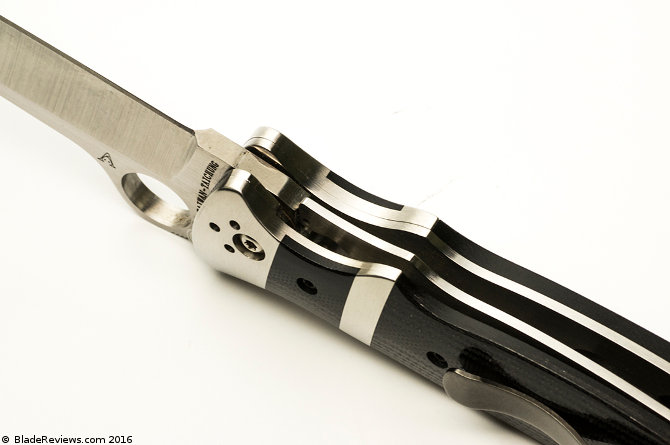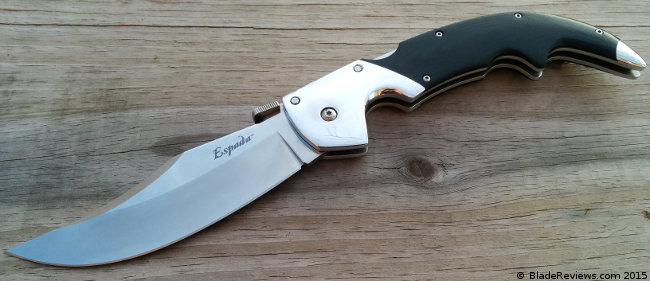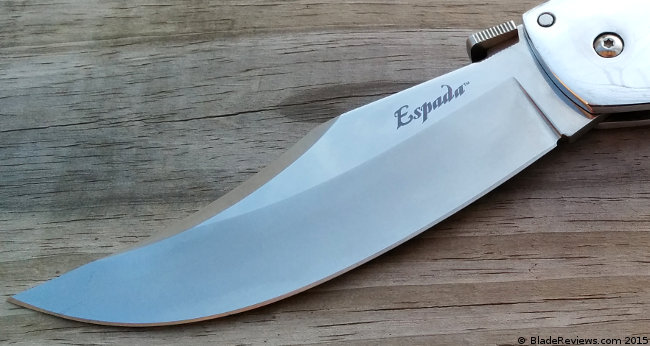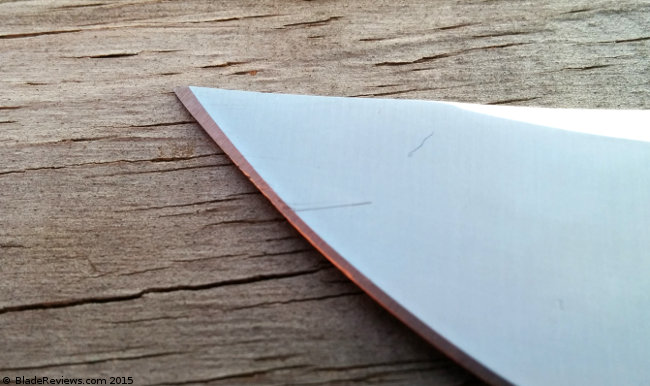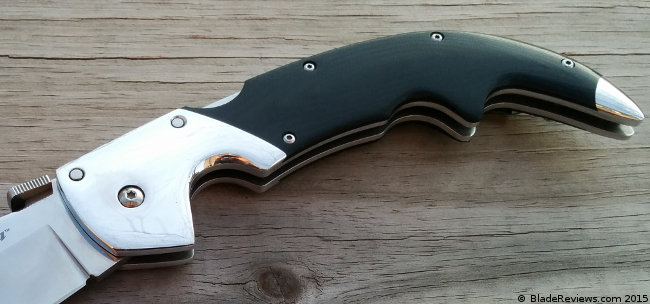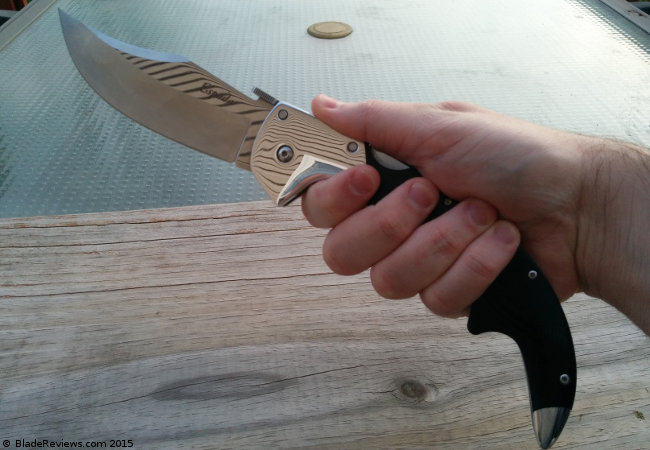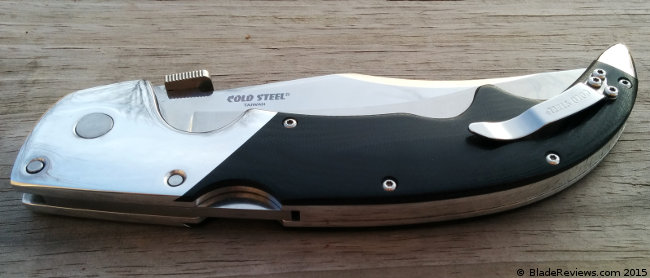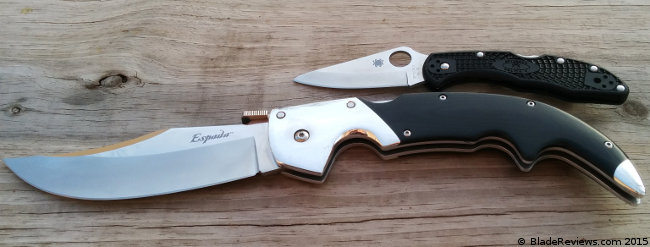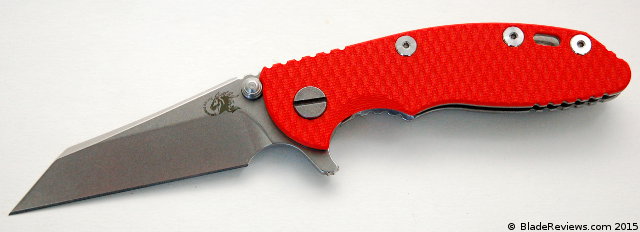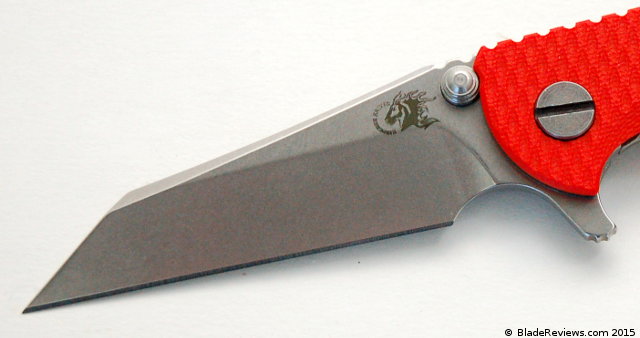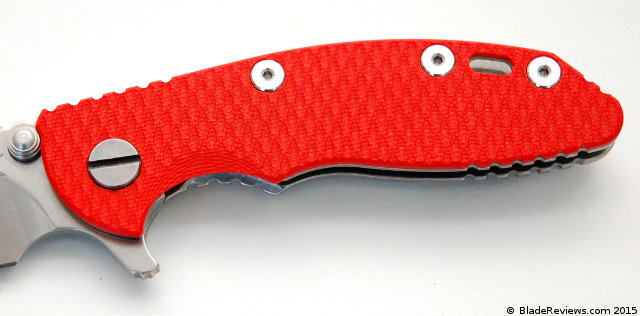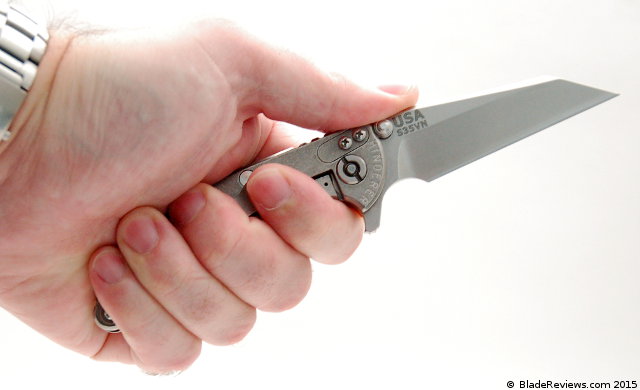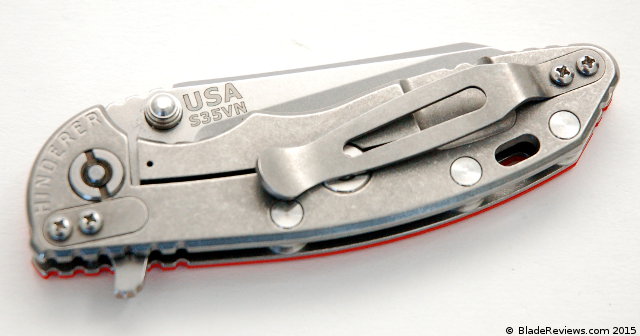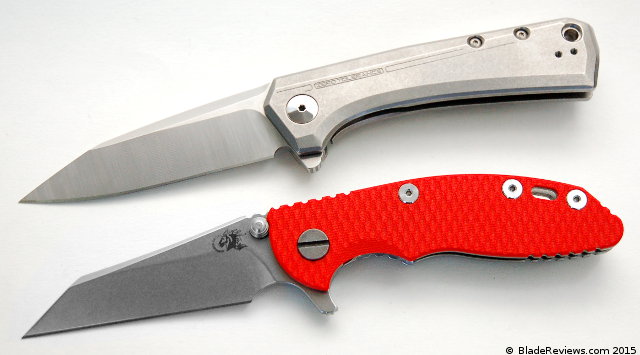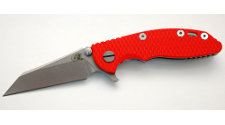Last Updated: July 19, 2019
It’s no secret that I think the creative team at Benchmade has been adrift for the past few years. This is perhaps best evidenced by the fact that the company’s most exciting new offerings are actually re-issues of old models: the 940-1 and 551-1. These rockstar designs are interspersed among more puzzling offerings like the 808 Loco and 300 Axis Flipper.
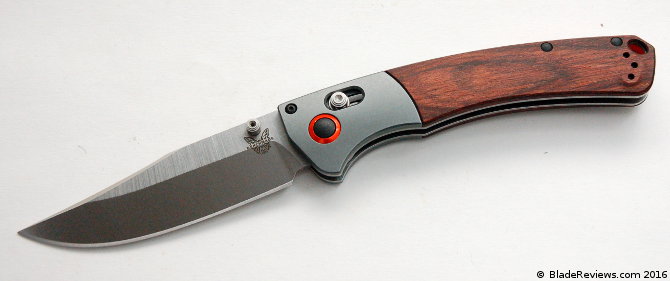
Buy the Benchmade Crooked River at BladeHQ
But Benchmade does seem to be cobbling together a theme. They seem to be taking this “old school, meet new school” approach not only to their classic designs, but also by melding traditional designs with modern manufacturing in their “Hunt” lineup. I thought the Small Summit Lake was a successful mashup of traditional lockback folder with modern materials, beefy construction, and precision manufacturing. The 15080 Crooked River is a knife cut from that same cloth.
In fact, the Crooked River takes the juxtoposition even further. This is an even greater departure from tradition to the point where we almost have a caricature of the classic bowie. Yet there is still a timeless quality to the knife. The low slung blade and bolstered handles tug at the heartstrings of traditional knife design, while the finishes and flourishes appeal to this fan of modern folding knives.
General Dimensions and Blade Details
The Crooked River has an overall length of 9.3″, a 4″ blade, weighs 5.41 ounces, and is made in the USA. This is a big knife, and is far outside the confines of what I would consider to be an every day carry (EDC) piece. If you were to whip this out in public to trim packing tape or open an envelope, most people would hide under their desk. And if a friend offered up a Swiss Army Knife at a campsite, you could go full Crocodile Dundee on the guy with this Crooked River. This is a “knoife”. I wouldn’t mind a smaller, more manageable version for daily carry.
The Crooked River features a long and lean clip point blade. I have always enjoyed a good clip point for it’s practicality, and the Crooked River is no exception. The high flat grind has been nicely executed complete with Benchmade’s 2-tone stonewashed satin finish. The blade is cut from an impressive 3.15mm thick piece of S30V stainless steel, and it carries a significant amount of steel out all the way to the tip. The end result is a blade that has a good tip for piercing, plenty of edge for cutting, and a nice belly for food prep and possibly even skinning.
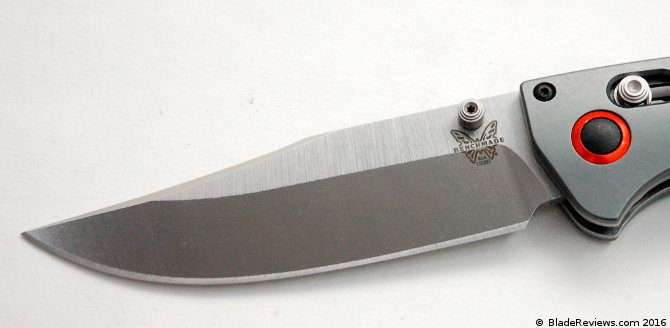
The choice of S30V stainless steel for the blade is less exciting now then it may have been 5 years ago. These days I prefer S35VN for it’s improved toughness and ease of sharpening over S30V, but in my opinion Benchmade has always done a great job with their S30V. For example, the S30V on the Volli continues to impress me with it’s sharpness, edge holding, and ease of maintenance. I think Benchmade knows how to make the most of this steel.
The blade geometry of the Crooked River is stouter than the Volli, but this is still a functional blade and the S30V performs nicely on this knife. Capable of taking a keen edge, and holding it for an acceptable period of time, the S30V on the Crooked River is still functional despite there being sexier steels on the market. No issues with corrosion either.
Handle, Ergonomics, and Pocket Clip
The Crooked River has a long curving handle that compliments its long curving blade. The combination of diamond wood, aluminum bolsters, and orange pivot collar is striking, and I am sure that decision alone has sold many 15080-2’s for Benchmade. If resin-injected wood isn’t your thing, then Benchmade also offers the Crooked River with smooth gray G10 handle scales.
Underneath the scales are full stainless steel liners (skeletonized) and a bright orange G-10 backspacer. Holding things together is a large black pivot and blackened steel hardware. Everything is precision fit, and there are a number of nice details to enjoy, like the arced face between handle scale and bolster, the geared backspacer, and of course the snazzy orange pivot collar. Even the lanyard hole is oval and chamfered, adding style to an otherwise mundane feature of a knife.
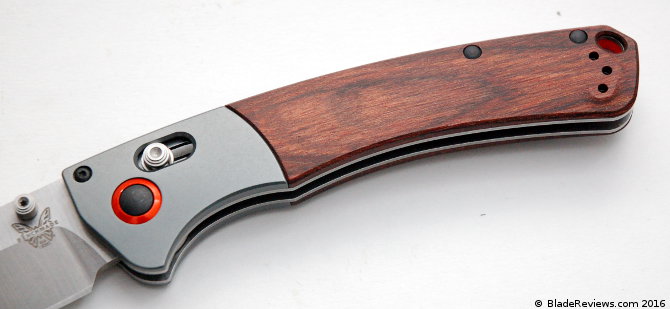
Despite there being a good deal of weight around the pivot, the balance point on the Crooked River is behind the axis lock, and is close to the “hump” of the finger choil. The hand feels most at home here; set back further on the knife. While this isn’t billed as a tactical folder, I would be curious to get someone like Chad’s take on the Crooked River. I have no doubt that a knife like this could be pressed beyond pure utilitarian purposes if the need arose.
Beyond my comments on the balance of the knife, the Crooked River benefits from a subdued approach to ergonomics and traction. The long handle provides plenty of room, even for extra large hands. The diamond wood scales offers some texture (not much), while a mild run of jimping on the back of the handle indexes the thumb while still allowing the user to cut with the knife for extended periods without significant thumb fatigue. All said, the ergonomics have proven to be adequate for my purposes.
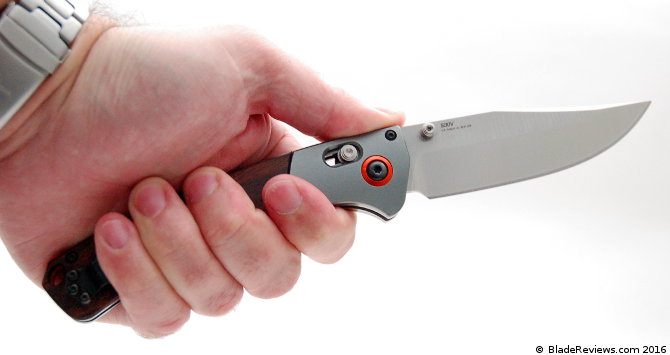
The Crooked River is a big knife. While I don’t think 5.41 ounces is overweight given the build quality and footprint, it’s still substantial, and when closed the knife is pivot heavy. This creates something of a pendulum effect in your pocket. Benchmade has tried to counter this with a stiff pocket clip. This is a good idea, and my Crooked River holds firmly in place.
On the subject of pocket clips, Benchmade went with a black parkerized version of their split arrow clip. I have always liked the split arrow clip, and here it is situated high on the handle for a relatively deep and discrete carry. The handle is also drilled and tapped for ambidextrous tip up use. That said, Benchmade’s deep carry clip will fit on this knife, and if you prefer a more discrete deep carry option Benchmade typically will send you a deep carry clip free of charge if you ask them nicely.
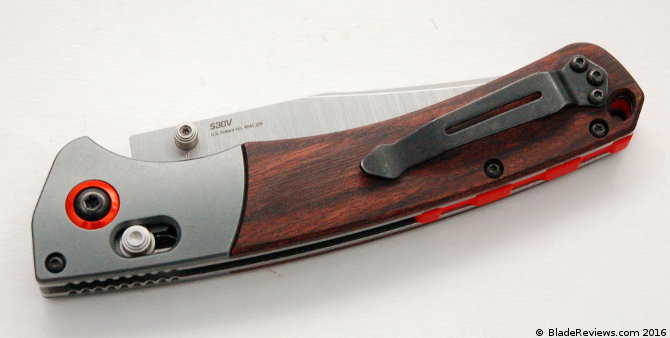
Deployment and Lockup
While some may grow bored with the axis lock, it remains one of my favorite locking mechanisms. I like the easy one handed opening and closing. Plus it’s fully ambidextrous. And I don’t know if I am simply bullshitting myself, but to me it looks like the phosphor bronze washers on these Benchmades have gotten thicker over the years. Much like my new 551-1, this Crooked River is smooth and easy to open. The blade pops into place with a satisfying “snick”, and the ambidextrous thumb studs are easy to get at with either hand.
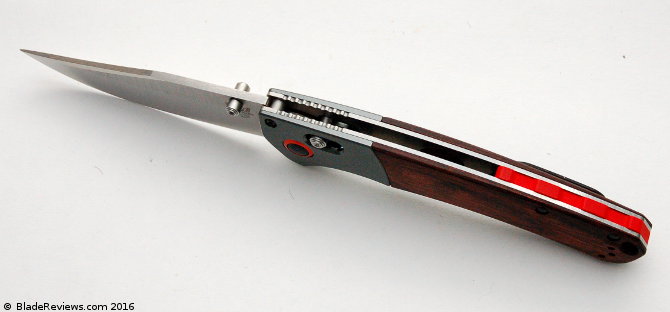
Unlike some of the axis lock knives that have crossed my path, my Crooked River locks up tightly and without any play. Blade play is a common complaint on axis lock knives, but I have found that most knives can be fixed with a targeted application of Loctite. Here, blade play was a non-issue, and the axis lock remains as practical and easy to use as ever.
Benchmade Crooked River Review – Final Thoughts
Not to get all jingoistic on everyone, but the Crooked River appeals to the red blooded American in me. This knife takes me back to my childhood, handling my dad’s old Buck fixed blade tucked away his closet next to the well worn Swiss army knives, and old harmonicas.
There is an undeniable charm to the Crooked River that strikes at that primal note that has drawn many people to knife collecting in the first place. While not the most practical offering for an erudite urban EDC, the Crooked River is unapologetically bold and beautiful, and I think it is one of the nicer new designs from BM.
The Crooked River is a knife that I would like a smaller version of. As it stands I don’t see it getting a ton of use personally, but perhaps it has a place in your collection. If the Crooked River piques your interest in the same way that it piqued mine, then I am pleased to report that it is a well made and satisfying folder.
- BUILT FOR THE HUNT: Simplicity and style meets unmatched function, no matter the application; An ideal hunting knife capable of countless tasks in the field.
- CPM-S30V STEEL: For first-rate edge retention and corrosion resistance; Clip-point construction for easily controlled cuts. Factory in Oregon City, Oregon.
- STABILIZED WOOD HANDLE: Is made from a durable composite material that's been backfilled with resin; Stands up to a range of harsh elements and environments; Stronger than natural wood.
- AXIS LOCKING MECHANISM: Ensures safety and a smooth open and easy close; Reversible split arrow clip; Lanyard hole for versatile carry options.
- YOURS, FOR LIFE: Benchmade will re-sharpen your knife to a factory edge for free, for the life of the knife. Benchmade LifeSharp services includes cleaning, oiling, adjustments, and re-sharpening.
I recommend purchasing the Benchmade Crooked River at Amazon or BladeHQ. Please consider that purchasing anything through any of the links on this website helps support BladeReviews.com, and keeps the site going. As always, any and all support is greatly appreciated. Thank you very much.
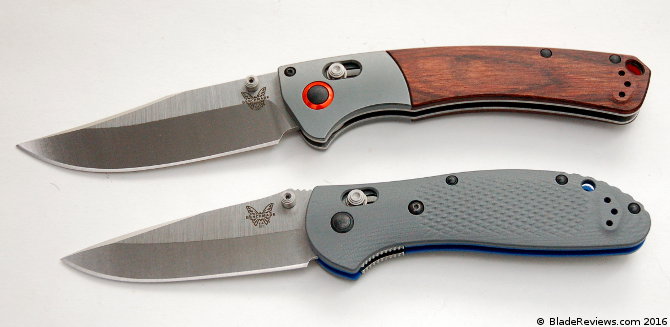
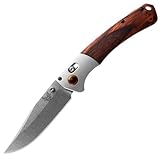
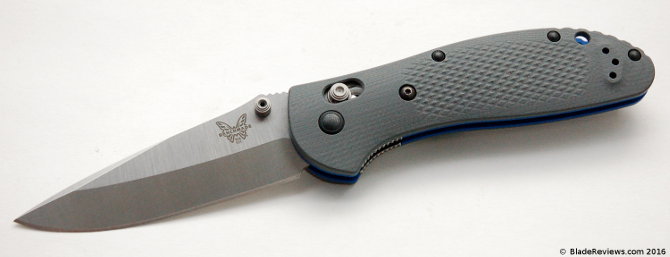
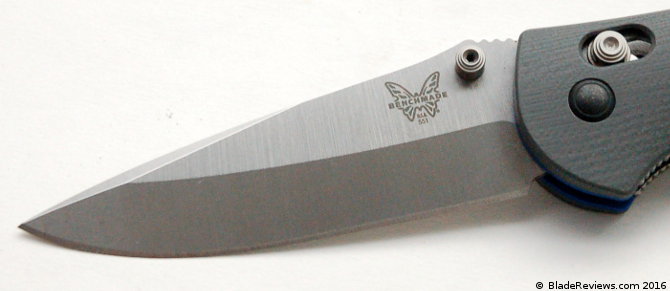
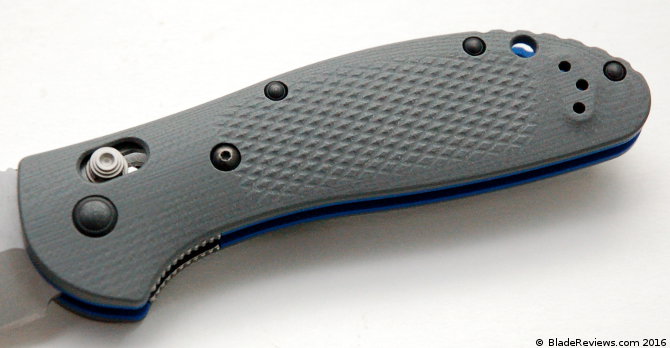
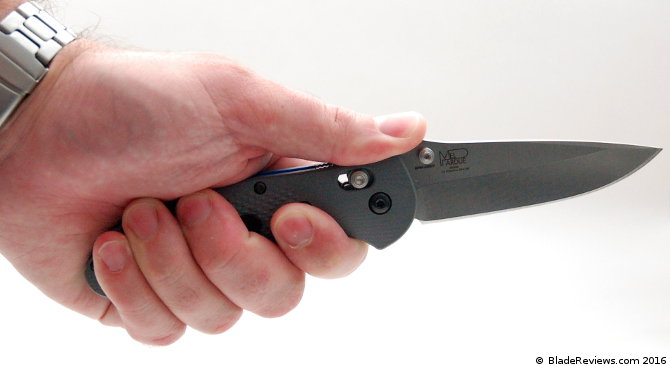
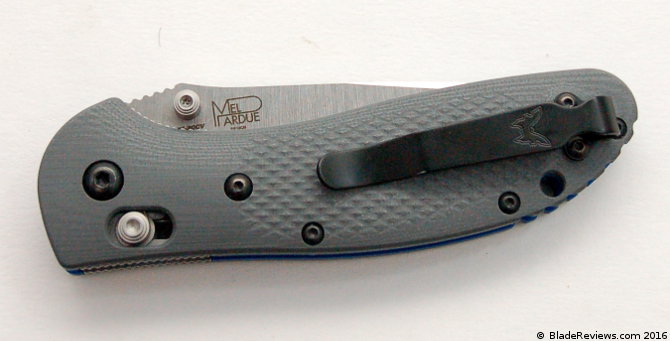
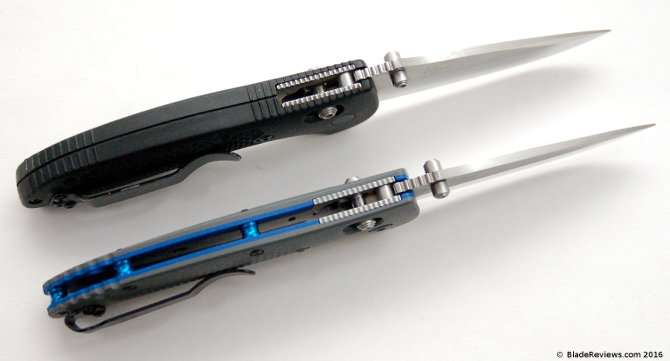
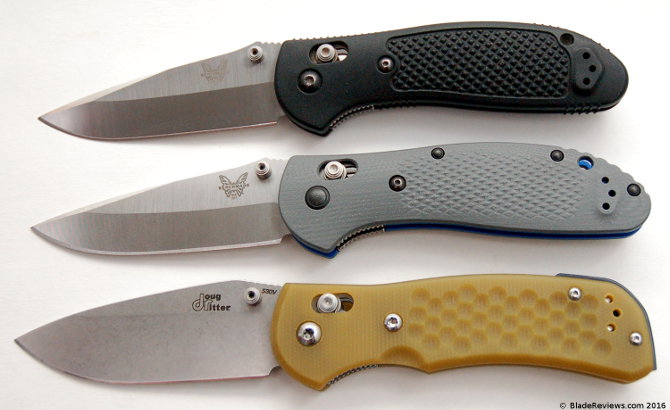

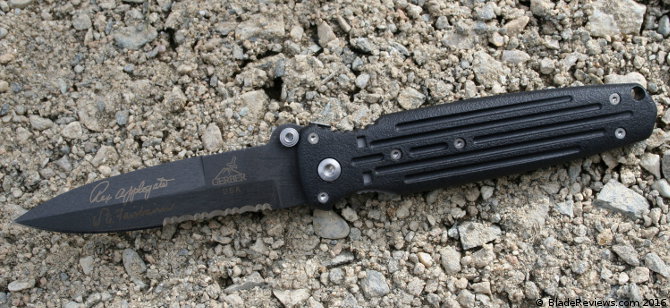
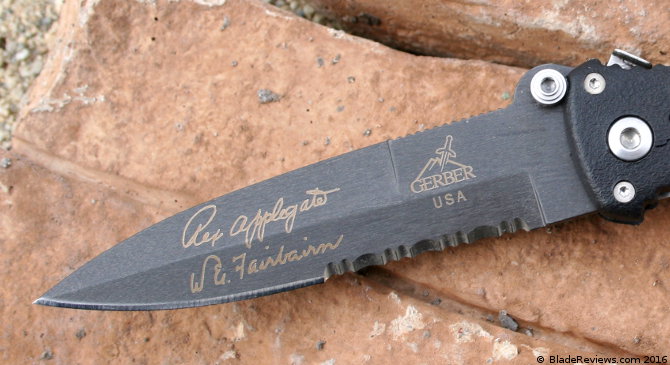
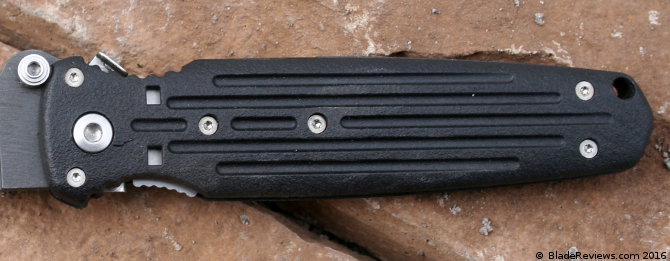
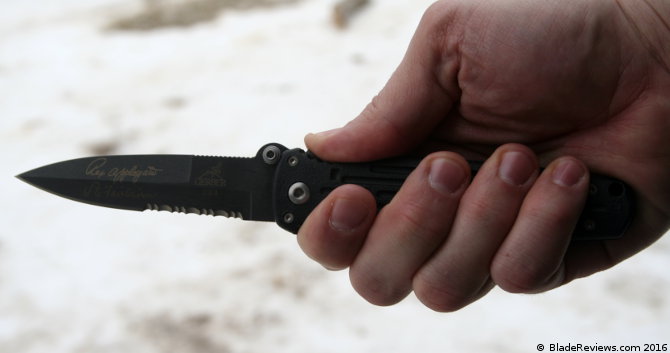
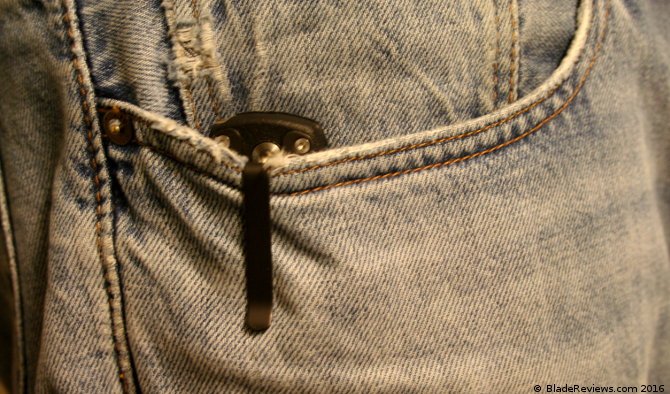
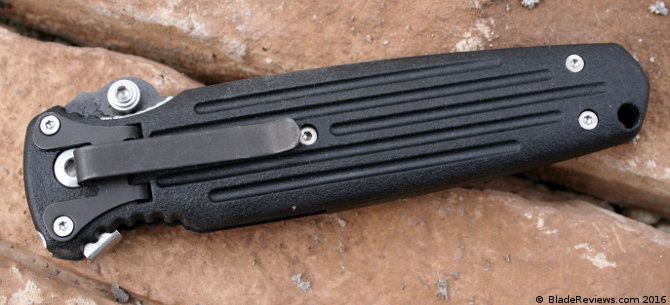
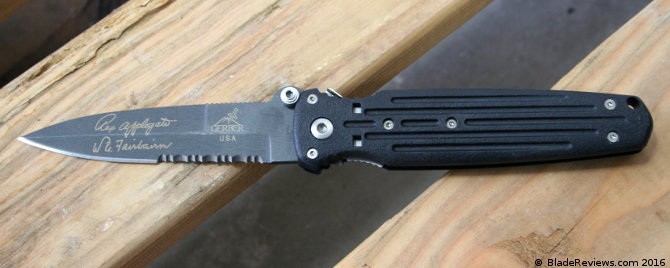
![Gerber Applegate Covert Knife, Serrated Edge, Black, 154CM [05786]](https://m.media-amazon.com/images/I/41yLxkUsrdL._SL160_.jpg)
